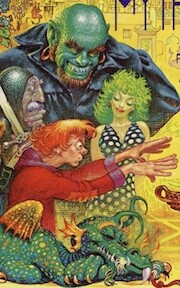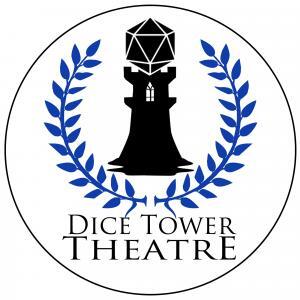Detect Magic
Artificer, Bard, Cleric, Druid, Paladin, Ranger, Sorcerer, Warlock, Wizard - 1 Level Spell
School: Divination
Casting Time: 1 Action
Range: 30 ft
Components: Verbal and Somatic
Duration: 10 mInutes
Attack/Save: None
Reference: PHB 231
Concentration, Ritual
For the duration, you sense the presence of magic within 30 feet of you. If you sense magic in this way, you can use your action to see a faint aura around any visible creature or object in the area that bears magic, and you learn its school of magic, if any.
The spell can penetrate most barriers, but it is blocked by 1 foot of stone, 1 inch of common metal, a thin sheet of lead, or 3 feet of wood or dirt.
My Comments: Perhaps one of the hands-down most used spells  in any caster’s bag of tricks, Detect Magic has always been considered one of the first things that a Wizard, at least, learns how to do. I am put in mind of Skeeve being taught to see magical auras by Aahz in Robert Asprin’s Myth Adventures.
in any caster’s bag of tricks, Detect Magic has always been considered one of the first things that a Wizard, at least, learns how to do. I am put in mind of Skeeve being taught to see magical auras by Aahz in Robert Asprin’s Myth Adventures.
I am also used to this spell being a Cantrip, considering I hadn’t come back to D&D until 5th Edition and was playing Pathfinder. At first I was boggled as to why it was made a first level spell requiring a spell slot to cast – despite it being a ritual spell. And then I started thinking about how useful Detect Magic actually is, and why the game might want to start restricting this ability.w
“Does that person have some magic on them? And what kinds? Weapons, armor, or that fancy necklace? Is there a potential magical trap on that door? Is there a magic item in the lair that your party needs, but you can’t find it by searching?”
Simply, with Detect Magic, you know if there’s magic around you. It does take an action to pinpoint the magic, but even still, this can really give away a lot of information. Does that person have some magic on them? And what kinds? Weapons, armor, or that fancy necklace? Is there a potential magical trap on that door? Is there a magic item in the lair that your party needs, but you can’t find it by searching? Detect Magic can help you narrow down where these threats and treasures are. If it’s a Cantrip, you could ruin an entire campaign by casting it left and right. Require a first level slot, and your party has to think about when to cast it or take the 10 minutes required.
(That said, if you want to be able to cast Detect Magic at will, as if it were a Cantrip, play a Warlock and choose the Eldritch Sight invocation, which is why we included Warlock in the classes for this spell.)
But what about other threats that you can’t detect with your regular senses? If you can Detect Magic, can you tell when someone’s invisible? When there’s an illusion in front of you? And the answer to that is complicated. Many spell discussions online ask whether you can use this as a simple See Invisibility spell, considering this spell is a powerful addition to any spellcaster’s arsenal. Many players will argue about whether you can detect the presence of something magical but not see it, or whether it just nerfs Invisibility altogether.
But in my games, the simple answer is “no.” I would argue against allowing Detect Magic to sense any sort of illusion. Illusions, as it says on page 203 of the PHB “deceive the senses and minds of others.” Detect Magic, while not specifically a sense, uses your senses to detect that magic. Illusions will trump that each time, otherwise you are significantly hurting an illusionist’s ability to trick. One of my former illusionist/thief’s favorite cons to make extra coin was to sell regular items to clueless young adventurers with Nystul’s Magic Aura cast on it, a spell meant to specifically mess with the hapless Detect Magic caster.
(Want to pierce an illusion? Wait until you’re 11th level and prepare True Seeing.)
Another thing to mention about Detect Magic is that it is one of those spells with the “ritual” tag. Only Bards, Clerics, Druids and Wizards can cast this spell as a ritual. Of course, rituals are not timed for combat, requiring 10 minutes of game time to cast. When you’re not in a hurry, this makes it easy to spend time in a room trying to determine if there’s something magical around you. Canny DM’s will set the clock against their players, forcing them to use their time and resources wisely.
Unless you have the Ritual Caster feat and thereby have the ritual in your book, you still must prepare the spell (except, of course, for Bards…they have to have it as a spell known, though). Considering its usefulness, and that it only takes up one slot of prepared spells, it’s always a good idea for a Wizard to keep this in their daily repertoire.
One last thing, and that is how the description of Detect Magic discusses how barriers interact with it. Savvy DMs – and therefore their more savvy, anti-spellcaster NPCs – can easily circumvent this powerful ability with just a little bit of melted lead on each side of a box. Particularly nasty DMs could even do something like build a thick stone box around the magical mechanism that holds a trap, thereby requiring a party to figure out why there’s extra construction. The party that is used to seeing lead-lined doors might start to cotton on to the fact that their DM both wants them to creatively find the traps, but doesn’t want to give it away. Use these clues as a great way of encouraging your players to think more deeply about how they go about playing the game.
What are some other ways you can fool a spellcaster using Detect Magic? What are some creative uses for Detect Magic that will help someone get through an adventure? Give me some thoughts in the comments below!

